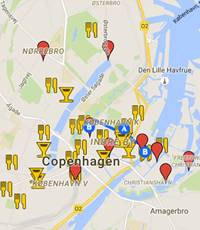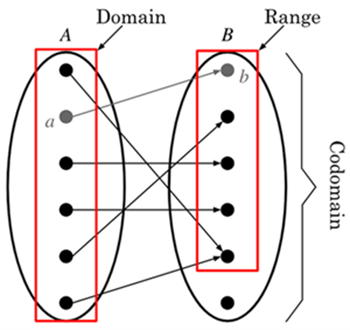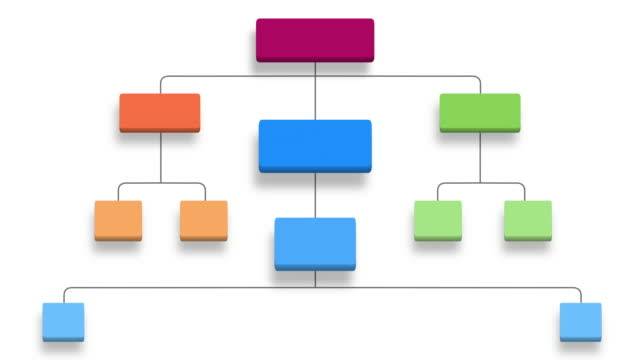Explore Map Types
Learning Objectives
After completing this unit, you’ll be able to:
- Describe the importance of maps and their role in various contexts.
- Explain how maps represent the physical world and its elements.
- Describe the relationship between mapped items.
The Role of Maps
For most of human history, maps have played an important role in allowing us to communicate and record ideas and information. Explorers used maps to find adventure in new lands, and sailors relied on them to navigate using the stars. In recent years, maps have even allowed us to share our location with friends.
Maps play a central role in everyday life, especially in our technology-centric world. From casual renderings to carefully detailed depictions, maps are powerful tools for a wide range of situations. In this module, you explore different types of maps, uncover the power of maps—how they represent geographic elements, convey spatial correlation, and persuade a narrative—and build the map literacy skills you need to take on data analysis with geographic data and maps.
Ready to start your learning journey through the exciting world of maps? Let’s go!
What Is a Map?
When you think of maps, you might think of a geographical poster map of the world in a classroom. Or you may think of the navigational maps app on your phone. But in the largest sense, a map is an image or picture that represents something else.

Today, perhaps the most common type of map is the navigational map, which presents data to help you get to your destination. The map app on your phone plots your starting location and your destination using coordinates, then finds a route between them. It shows you details like street names and intersections to provide landmarks. This data lets you plan and estimate distances for your journey.
But there’s more to navigational maps than just roads. Navigational maps also include:
- Airspace maps for altitude
- Trail maps for hiking distance and elevation
- Nautical maps for water levels
Schematic maps are another common map type. These maps portray a limited view of a specific area to deliver information quickly and clearly. Schematic maps focus on the relationships between elements. They are often abstract or stylized, prioritizing key information of the schema, rather than complete locational accuracy.
For example, you might use a schematic map that shows the outlets and wires in a house to identify a circuit overload. While the electrical map may not be precise in proportion, it provides the technical details you need about the circuits, wires, and outlets they include.
Schematic maps can cover a wide range of topics, for example:
- Departments in a store
- Emergency exit routes in a hotel
- Meeting rooms in an office building
- The stops on a specific bus line
Next, let’s explore an assortment of non-geographic maps that each have their own way of representing different aspects of the world around us.
Data Mapping
Data mapping is the process of matching data fields from one source to data fields from another source. (This is different from data maps, or data visualizations, which we cover in unit 4.)
Have you ever uploaded a resume to an online job application? Did all the information transfer successfully to the right fields? Or did you have to manually input the information because you had “Name” and they wanted “Full Name”? Ideally, data mapping automatically pulls the information from your resume and puts it into the correct places in the online application. But even if you had to manually type it in, that’s still data mapping.
Data is organized differently depending on who generated it, where it’s stored, and what it’s measuring. When data is exported from one source and imported into another, misalignment can occur when attempting to make connections. You can think of data mapping as the translator for individuals who don’t speak the same language.

Mathematical Mapping
Mathematical mapping looks at the relationship between numbers.
These maps are conceptual tools that reveal patterns between the input values, the domain, and corresponding output values–the range–of a function.

Logical Mapping
Logic maps condense complex information by visually organizing the concepts and their relationships. Logic maps can be quite technical and include many details, like a network graph; or they can be broad and simple, like brainstorms. Logic maps often use keywords, phrases, or symbols to link ideas together.
Logic mapping is a way to present information visually to allow users to easily understand how the information is connected. Consider the layout of a web page. Logic maps (called site maps in this context) are a common organizational tool to show the relationship between the main pages and subpages. A top-down organizational chart is another example. This type of logic map displays information hierarchically.

Map Awareness
While maps are undeniably useful, they also have limitations and challenges. When you use any model, it’s important to remember that the map is just a representation and not the thing itself. Be aware of the shortcomings, biases, and distortions that may be present in the map, and avoid jumping to conclusions.
To get a better understanding of the contents and potential pitfalls, ask yourself the following questions when you look at a map.
-
What’s the purpose of this map? Is it for education, directions, or something else? Is it literal or symbolic?
-
Do I understand what’s represented on the map? Does the map have a legend?
-
What’s the scale of the map? Does the distance accurately portray the relationship between objects?
-
What’s the context of the map? Does the map depict what it says it will?
-
Who created the map and why? Are they qualified in this area? Is the map from a reliable source? Can the map be validated against other sources?
Soon you’ll be a critical map consumer and better able to appreciate the value of maps as informative and persuasive tools.
Now that you’ve become familiar with the basics, it’s time to learn about the elements that make up a map.